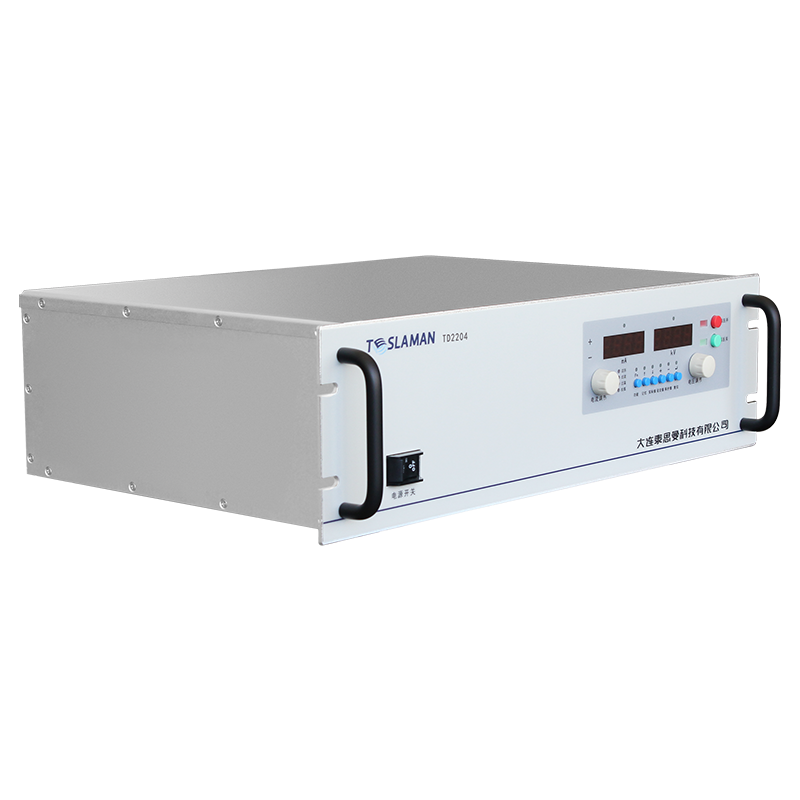Breakdown Protection Mechanisms in High-Voltage Power Supplies for Electrostatic Chucks
Electrostatic chucks, essential for wafer fixation in semiconductor manufacturing and precision machining, rely on high-voltage power supplies to generate electrostatic fields. However, dielectric breakdown in high-voltage environments can cause equipment failure or safety hazards, making breakdown protection mechanisms critical for system reliability.
1. Breakdown Mechanisms and Risk Analysis
Electrostatic chuck power supplies typically require DC or pulsed outputs up to ±2500V. Insulation breakdown occurs when the local electric field strength exceeds the material’s threshold:
1. Gas Discharge: Ionization of gas molecules between electrodes triggers corona or arc discharge .
2. Solid Dielectric Breakdown: Defects (e.g., impurities, voids) distort the local electric field, initiating avalanche effects .
3. Transient Overvoltage Breakdown: Runaway electrons (RAE) under nanosecond pulses accelerate discharge channel formation .
2. Multi-Layer Protection Mechanisms
Modern power supplies employ hierarchical protection strategies:
1. Dynamic Voltage-Current Monitoring
• Real-time Feedback Control: 12-bit ADC monitors output current (±100μA resolution) and voltage (±8V resolution), with PID algorithms dynamically adjusting PWM to maintain safe field strength .
• Nanosecond-Response Protection: Upon detecting microsecond overcurrent or arcing, the control circuit cuts output or reverses polarity within 300ms to halt discharge .
2. Multi-Stage Electrical Protection
• Input Stage: Varistors (270V rating) suppress grid surges; fuses prevent overcurrent damage .
• Output Stage:
• Overvoltage/Overcurrent Protection: Voltage comparators trigger shutdown if deviations exceed thresholds.
• Short-Circuit Protection: LM339N comparers detect current spikes and deactivate switches via drive transformers .
• Arc Suppression: Current limiting circuits (0.1–3mA adjustable range) prevent sustained arcing .
3. Intelligent Polarity Switching & Field Uniformity
• Bipolar Output: Dual-polarity voltages (e.g., +2500V/–2500V) neutralize space charges, reducing dielectric polarization. Polarity switching within ≤1s minimizes transitional breakdown .
• Field Optimization: Electrode geometry (e.g., tip radius ≥4μm) and shielding layers enhance field uniformity by 20% .
4. Material and Thermal Management
• Dielectric Materials: Cross-linked polyethylene (XLPE, breakdown strength ≥15kV/mm) and silicone-coated surfaces improve moisture resistance .
• Thermal Control: Temperature sensors on heat sinks dynamically adjust fan speeds to maintain internal temperatures ≤45°C (ambient: 0–45°C), preventing thermal breakdown .
3. Emerging Technologies
1. Digital Predictive Maintenance
IoT-enabled remote monitoring analyzes operational data (e.g., ripple <0.1%, thermal drift <50ppm/°C), using machine learning to predict insulation degradation and schedule proactive maintenance .
2. Runaway Electron Suppression
Particle-in-cell/Monte Carlo (PIC/MCC) simulations optimize pre-ionization density to suppress RAE-induced avalanches, improving discharge uniformity by 40% under nanosecond pulses .
Conclusion
Breakdown protection in electrostatic chuck power supplies integrates electrical engineering, materials science, and intelligent control. Hierarchical mechanisms—dynamic monitoring, multi-stage protection, field optimization, and digital management—collectively enhance system robustness. Future advancements in RAE suppression and AI-driven adaptive defense will further evolve protection strategies, ensuring reliability for next-generation manufacturing systems.




















